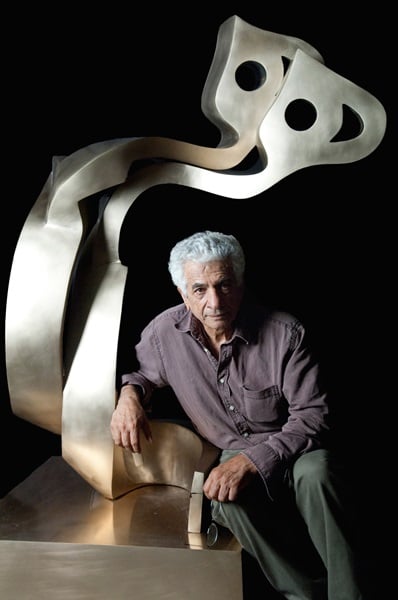
On February 10, the Davis Museum at Wellesley College will honor Iranian artist Parviz Tanavoli with the first-ever solo exhibition of his work mounted by a U.S. museum.
Though Tanavoli has been at the forefront of the recent market boom for contemporary art from the Middle East, his illustrious career stretches back for several decades. He represented Iran at the 29th Venice Biennale in 1958 and the earliest of his iconic “Heech” sculptures—the Persian word for “nothing”—are now approaching the 50-year-old mark. Tanavoli’s work has been described as “poetry in bronze,” and the artist has often been called the “father of modern Iranian sculpture.”
Earlier this year, following a dispute between the artist and the city of Tehran, authorities raided his home. In the process, millions of dollars worth of sculptures were seized and damaged (See: “Iranian Police Raid Tehran Home of Parviz Tanavoli“).
The exhibit was organized by the museum and is supported by the Maryam and Edward Eisler/Goldman Sachs Gives Fund on Art and Visual Culture in the Near, Middle, and Far East, which was established in the past year (2014).
“The Davis is indeed able to showcase the incredibly rich oeuvre and powerful philosophy of one of Iran’s greatest living artists,” Maryam Eisler, a London-based collector and philanthropist, as well as a Wellesley alumna, told artnet News. “[He is] a man who has no doubt inspired generations of young creatives both inside the country and abroad.”
The show will feature works from across his oeuvre—sculpture, paintings, printmaking, ceramics, rugs, and jewelry dating back to 1960. The retrospective was curated by Davis museum director Dr. Lisa Fischman and Dr. Shiva Balaghi of Brown University.
“It became clear that Parviz Tanavoli—an artist of enormous and longstanding stature, acclaim, and impact,” Fischman told artnet News, “was overdue for major retrospective consideration.”
Fischman says she and Eisler expect the show to “introduce entirely new audiences to Tanavoli’s extraordinary career and oeuvre, as well as offer fresh perspectives to his many collectors and admirers around the world.” In Tanavoli’s work, she says, “one sees clearly the ability of art to transcend cultural and political bounds while remaining truly and distinctively rooted; to excite dialogue and discourse while smoothly sidestepping dogma.”
Eisler said it is an honor for her to be personally associated with his work and to have the opportunity to see his works at her alma mater. “As a child,” she said, “I recall seeing Parviz’s work at the Museum of Contemporary Art of Tehran before I left the country in 1978.”